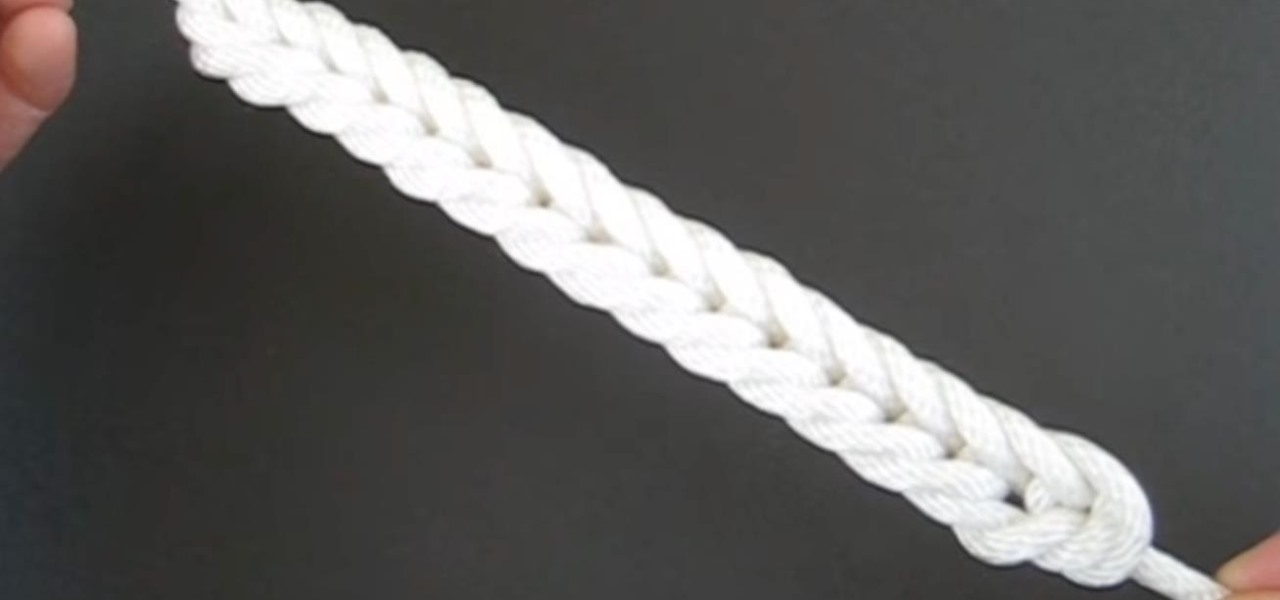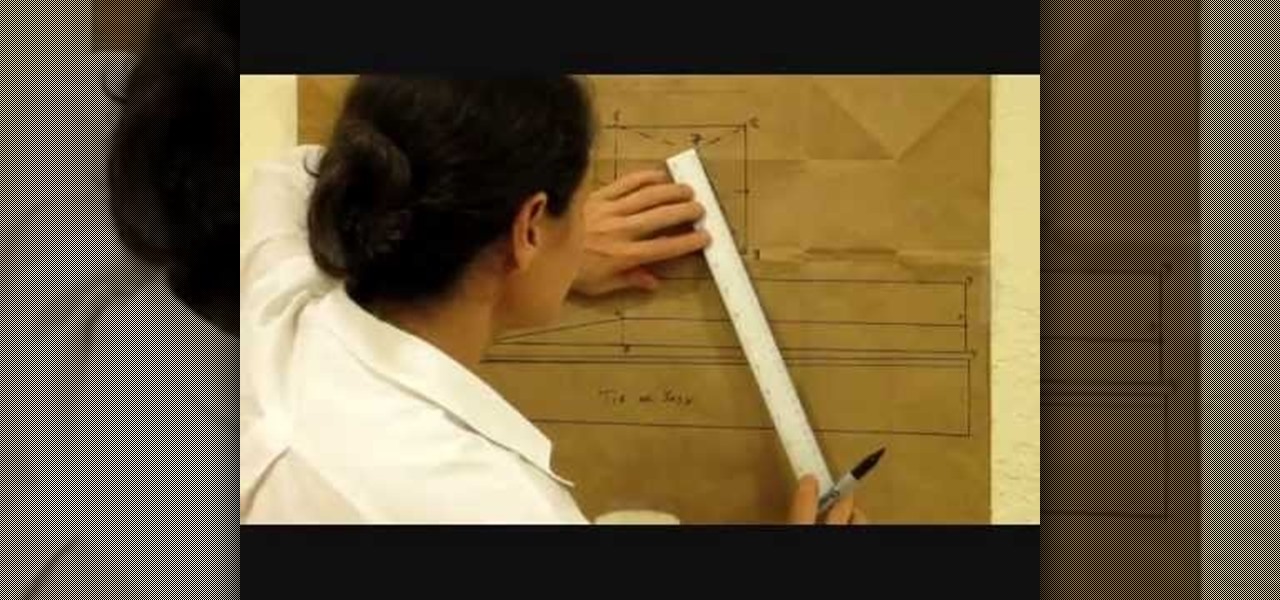Active Sewing & Embroidery Posts

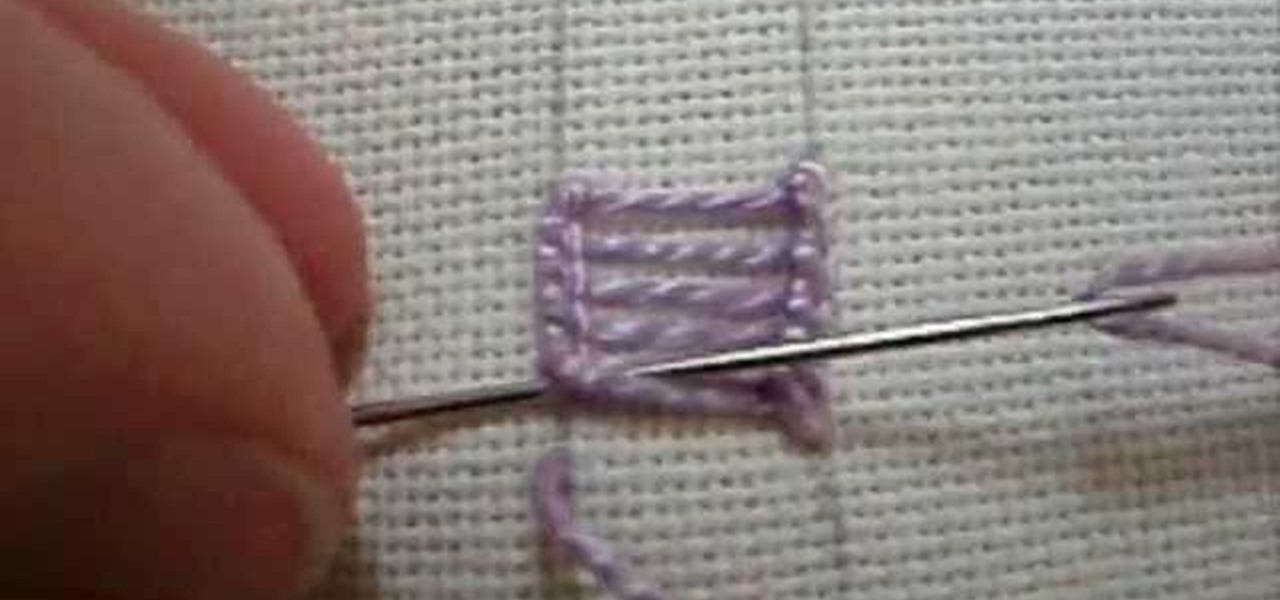
How To: Do the Ladder Stitch
Ladder stitch in hand embroidery can be one of two stitches. There's the surface embroidery technique that creates a decorative band that looks a lot like a ladder, with edges that look like a chain stitch. There's also a drawn thread technique called ladder stitch that produces a ladder-like strip of remaining threads in the design area. The ladder stitch in this video tutorial is the former - the decorative band used in surface embroidery. Watch this video from Needle 'n Thread to see how i...

How To: Do the Chain Stitch
Another basic hand embroidery stitch, the chain stitch is used to outline and to fill spaces. It's a fun stitch to work, and always looks great! Watch this video from Needle 'n Thread to see how it's done.
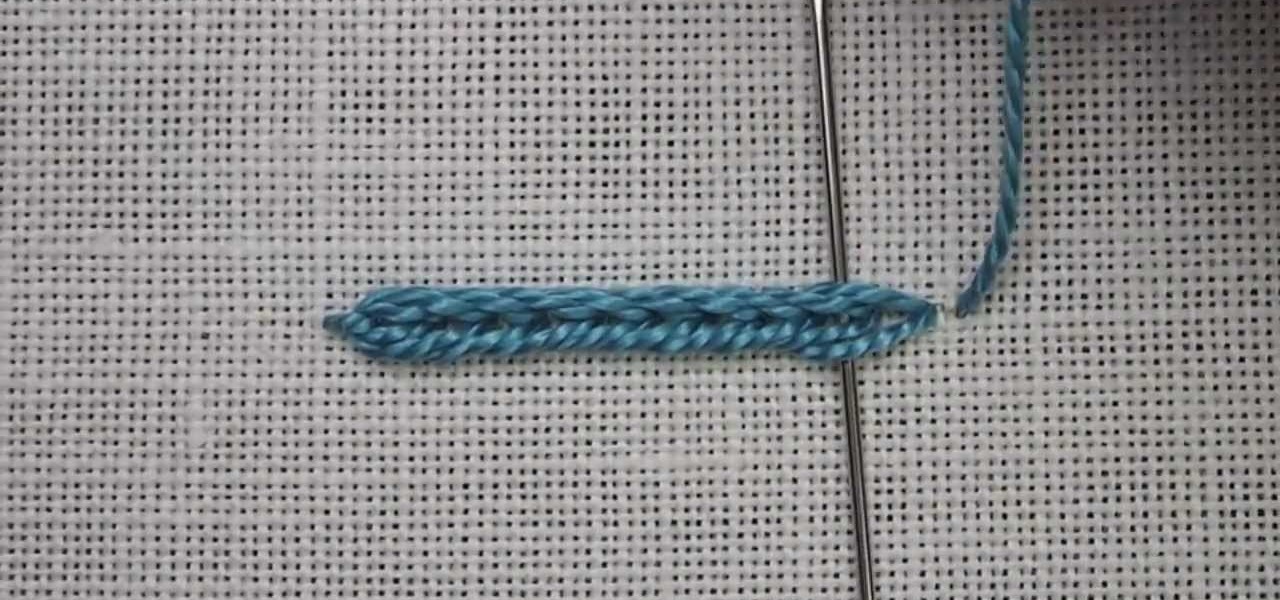
How To: Do the Heavy Chain Stitch
The heavy chain stitch used in hand embroidery is a variation of the regular chain stitch, but it creates a wider, thicker chain stitch band. It's an easy stitch to execute. When you want a bolder line, you can substitute it for the regular chain stitch. This video tutorial will show you the basic concept of creating a heavy chain stitch band. Watch this video from Needle 'n Thread to see how it's done.
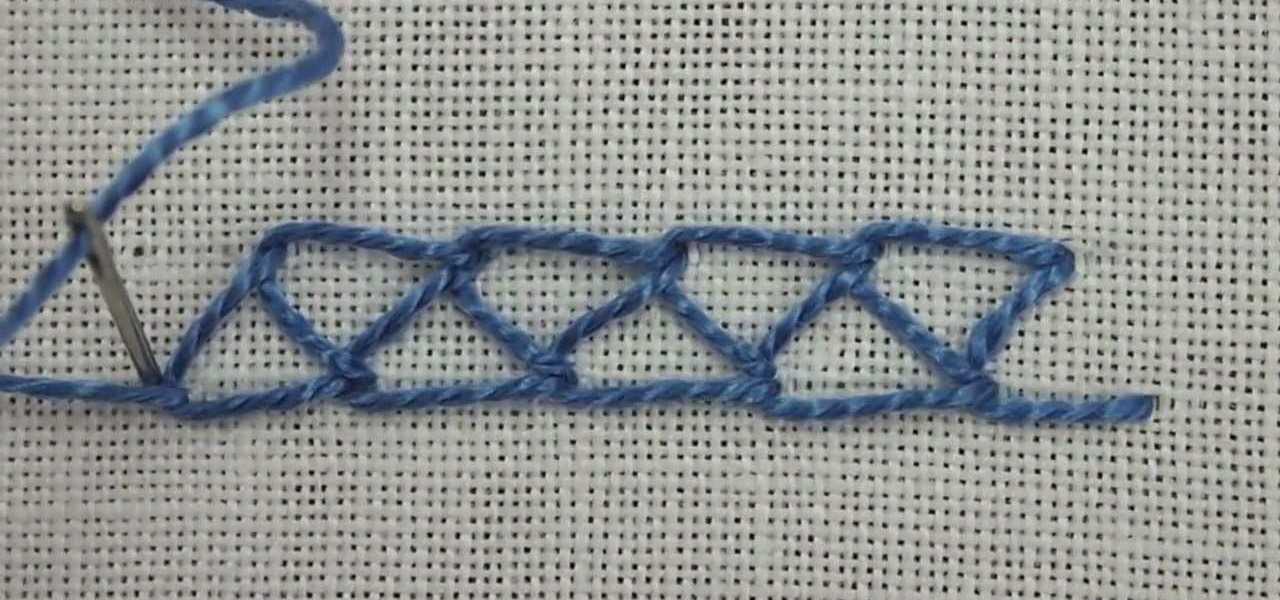
How To: Do the Double Chain Stitch
Here's a video tutorial from Needle 'n Thread for the double chain stitch used in hand embroidery. This is a quick, easy stitch which creates a wide decorative band. It looks somewhat similar to the closed herringbone stitch, but it's created with the same (few) easy steps used in the chain stitch.
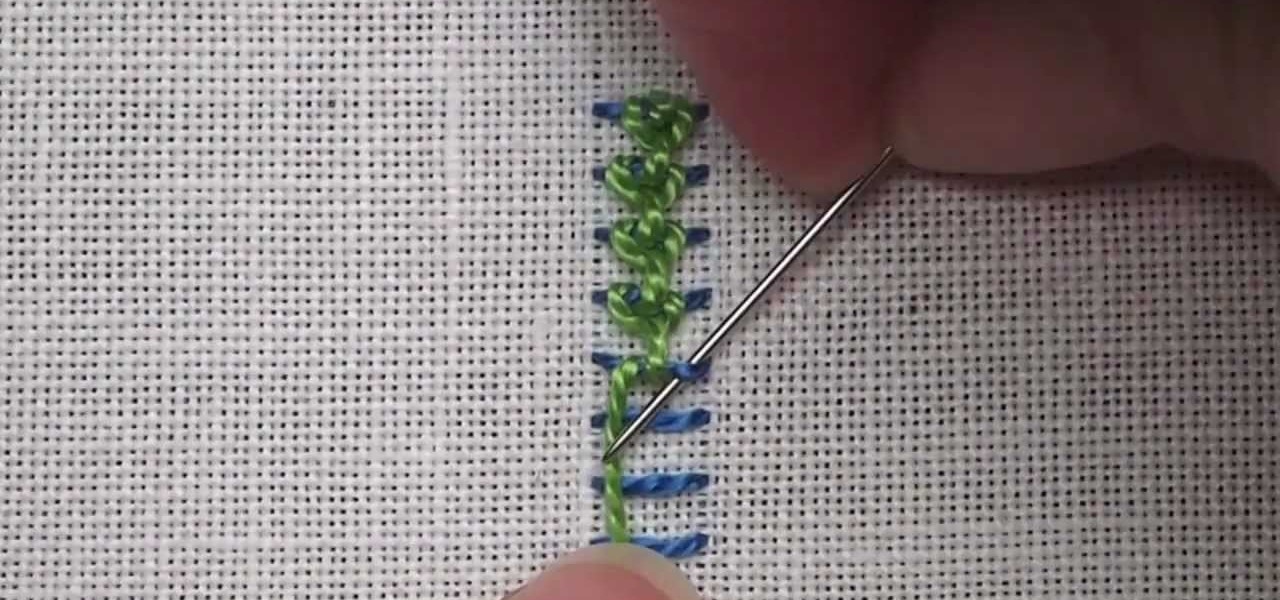
How To: Do the Raised Chain Stitch Band
This is a composite stitch. There are two embroidery stitches here put together to make the raised chain: the simple straight stitch which forms the bars on which you stitch the chain stitch. Watch this video from Needle 'n Thread to see how it's done.
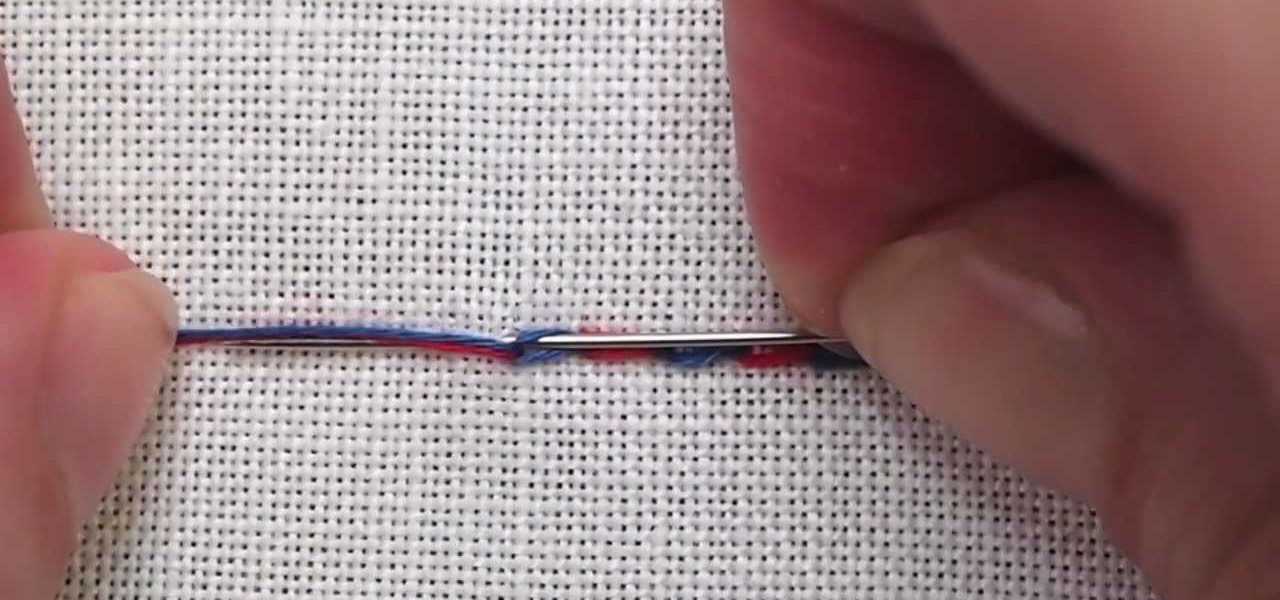
How To: Do a Checkered or Alternating Chain Stitch
The chain stitch is perhaps one of the most common stitches in hand embroidery. By itself, it's pretty versatile. Add all the variations, and you can do just about anything with the chain stitch! Here's the alternating or checkered chain stitch. Watch this video from Needle 'n Thread to see how it's done.
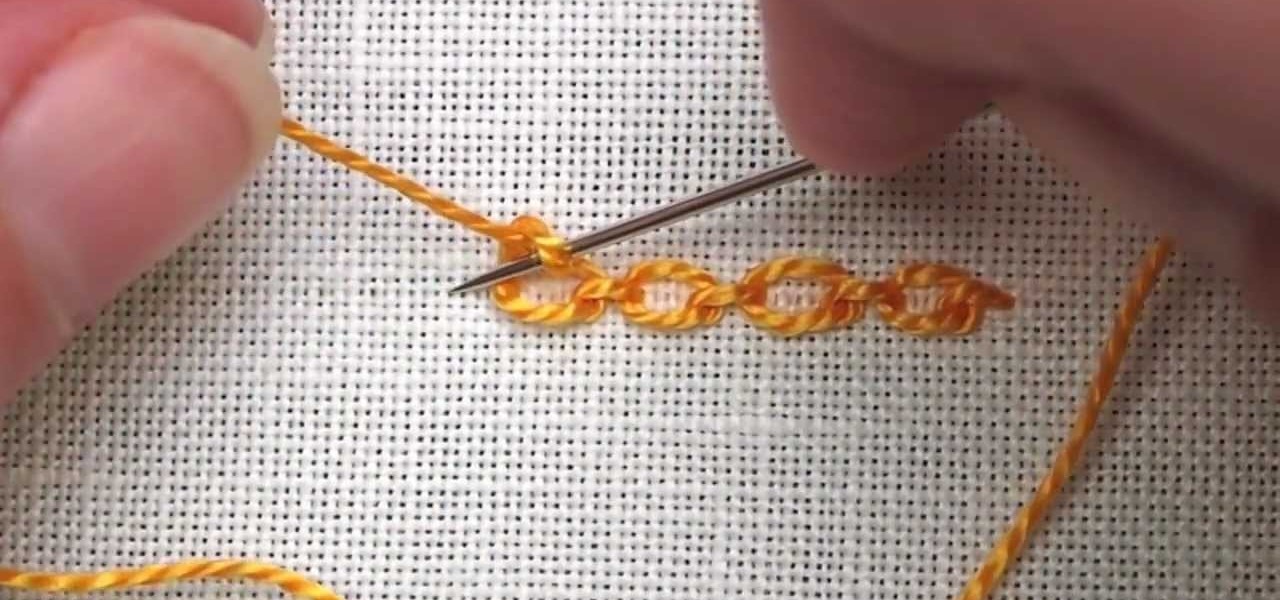
How To: Do the Cable Chain Stitch
There are many variations on the chain stitch used in hand embroidery. Here's one that produces a "realistic-looking" chain, with a small link between each of the loops in the chain stitch. It's called the cable chain stitch. Watch this video from Needle 'n Thread to see how it's done.
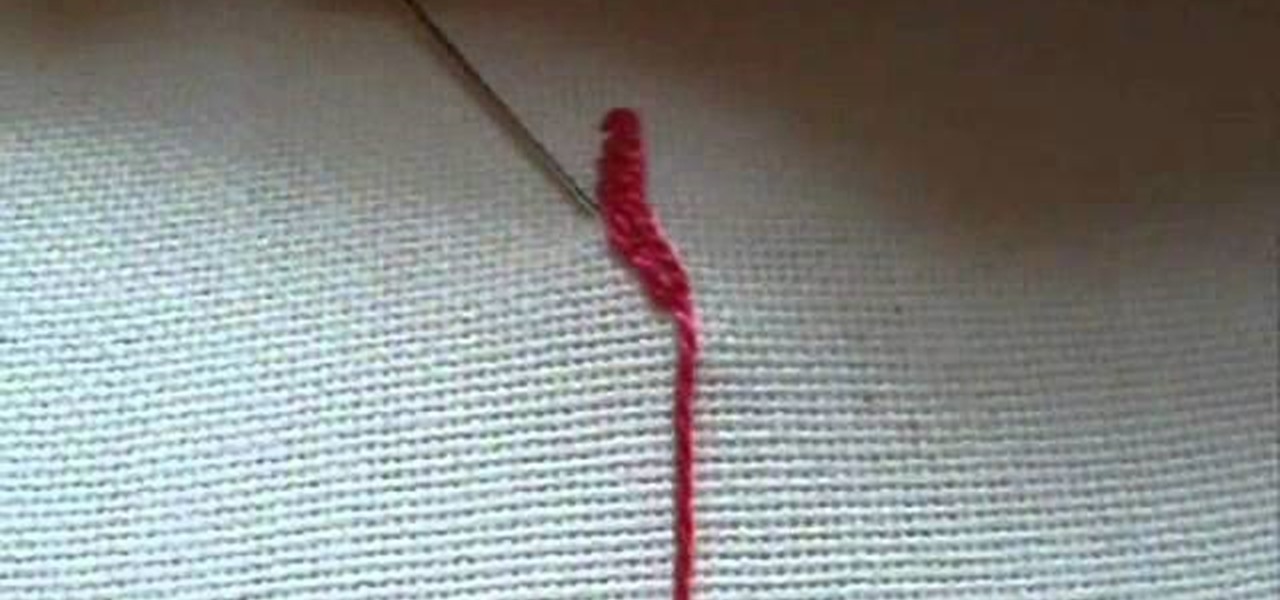
How To: Do the Rope Stitch
The rope stitch is a nice hand embroidery stitch, perfect for a thick, corded look, and a member (believe it or not) of the chain stitch family. It looks like overcast stitch on a slant, or trailing on a slant. It's a great stitch for curves. Watch this video from Needle 'n Thread to see how it's done.
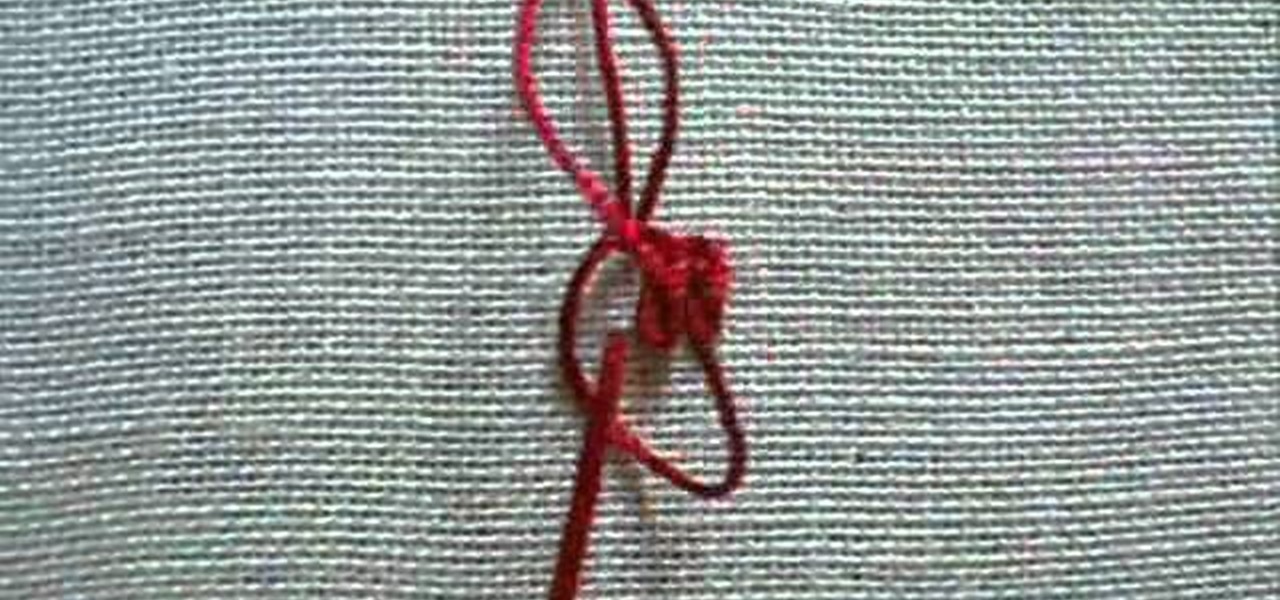
How To: Do the Rosette Chain Stitch
Here's a video tutorial from Needle 'n Thread for another hand embroidery stitch - the rosette chain stitch. The rosette chain stitch is much like the oyster stitch, but it's worked in a line, or around curves. The oyster stitch is more often seen individually.

How To: Do the Wheat Stitch
If you are a beginner at hand embroidery, one of the first stitches you will probably learn is the chain stitch. The chain stitch has many variations, and one of them is the wheat stitch, also known as the wheatear stitch. This stitch is simple to work and produces a line that resembles a shaft of wheat. The stitch can be used in all kinds of applications - it would make great background greenery in flowers and gardens, it can also serve as a seam embellishment in crazy quilting, and it can s...
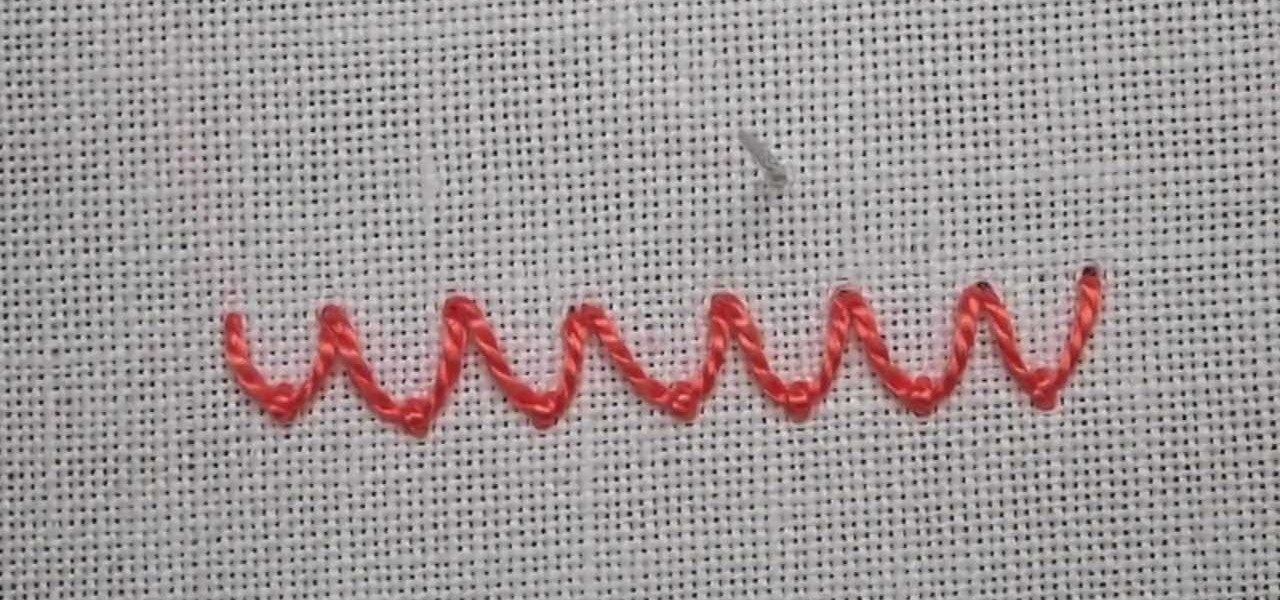
How To: Do the Horizontal Fly Stitch
The fly stitch is another basic embroidery stitch used for straight and curved lines, seam embellishments in crazy quilting, and general surface embroidery techniques. The fly stitch can be worked horizontally and vertically. In this video, it is worked horizontally. Watch this video from Needle 'n Thread to see how it's done.
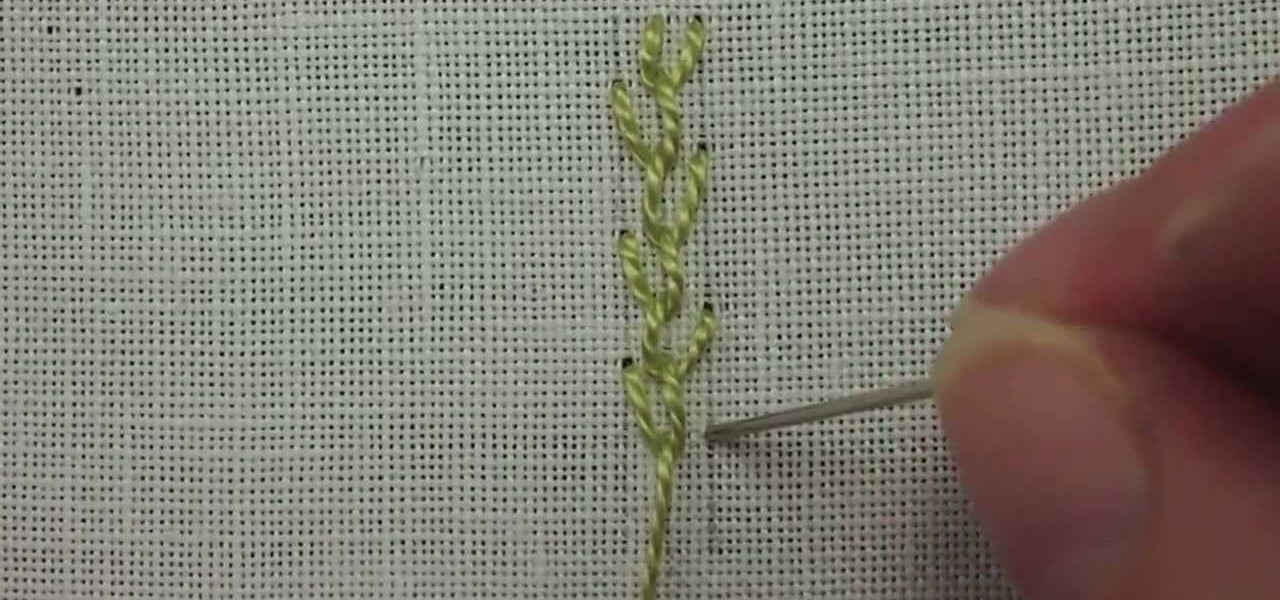
How To: Do the Feather Stitch
The feather stitch is an easy stitch for hand embroidery. It's worked vertically, from top to bottom in a kind of back-and-forth, right-and-left motion. You can use the feather stitch in hand embroidery for edges and borders, it's used often in crazy quilting as a seam embellishment, and it also makes a good foundation of foliage or stems in flower designs, in Brazilian embroidery, and more. Watch this video from Needle 'n Thread to see how it's done.
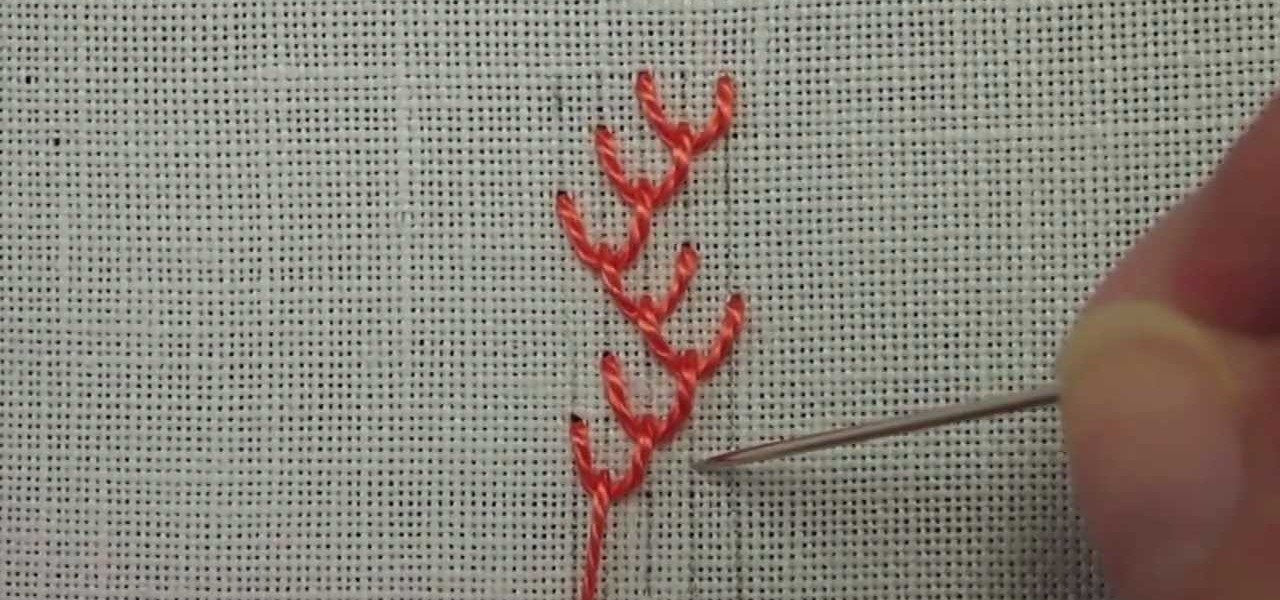
How To: Do the Double Feather Stitch
Variations to the feather stitch make it a versatile stitch for hand embroidery. Like the feather stitch, the double feather stitch is used for foliage, sprigs, greenery, etc., in all types of general surface embroidery, and is especially good for Brazilian embroidery, ribbon embroidery, etc. It works great as a seam embellishment in crazy quilting, and as an edging or border stitch on other work. Watch this video from Needle 'n Thread to see how it's done.
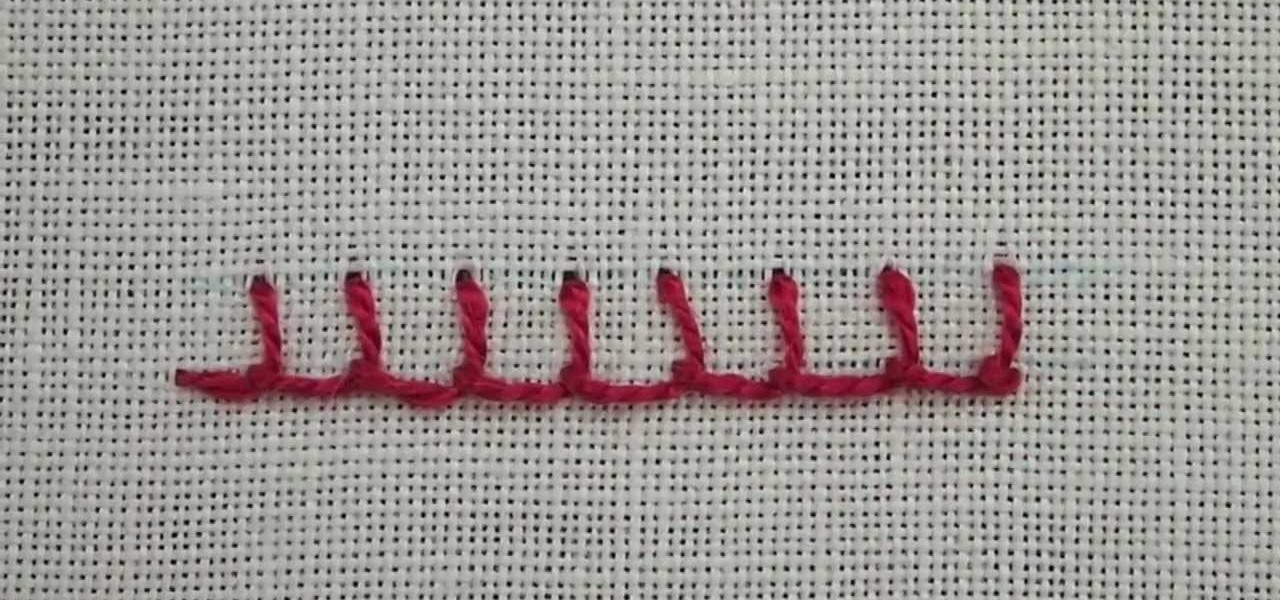
How To: Do the Buttonhole Stitch
The buttonhole stitch is used in many types of hand embroidery - general surface embroidery, crazy quilting, whitework and cutwork, Mountmellick embroidery, needle lace, filet work - you name it, buttonhole stitch fits in somehow. It's a super versatile stitch, and once you have the basic stitch down, it's just a matter of applying it in a variety of ways. Watch this video from Needle 'n Thread to see how it's done.
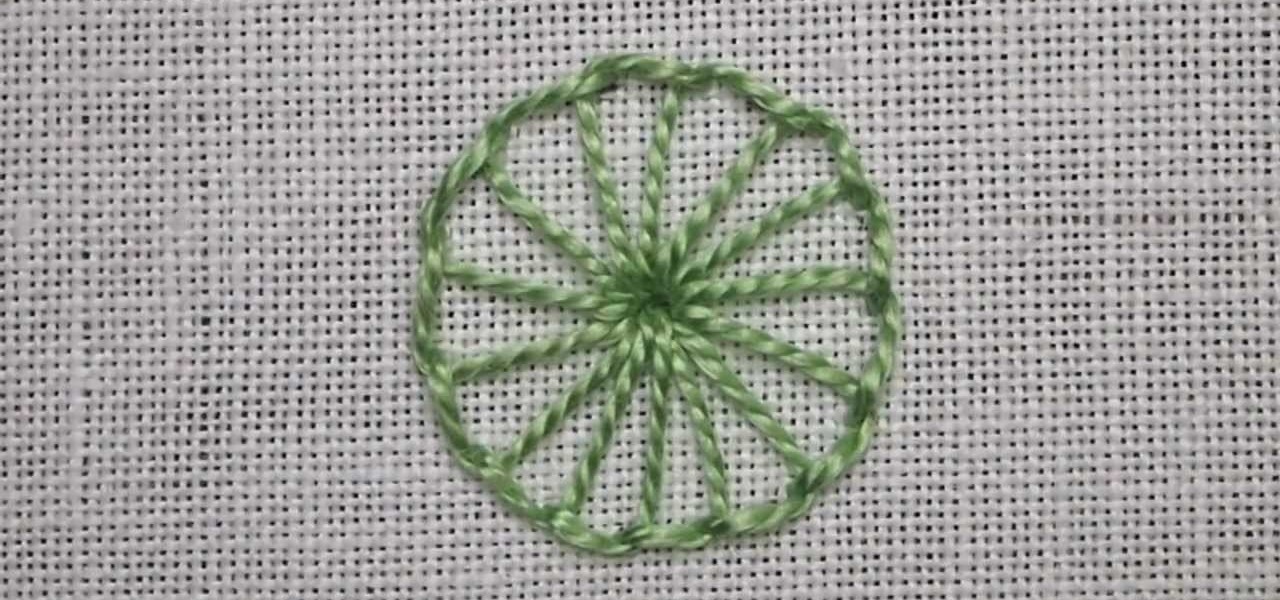
How To: Do Buttonhole Wheels
Once you know how to do the buttonhole stitch, it's just a matter of "working it" a bit to master variations of the stitch. In this video from Needle 'n Thread, you'll learn how to work a buttonhole wheel, which can be effectively used in all kinds of embroidery - especially flower-like accents and for adding texture to designs.
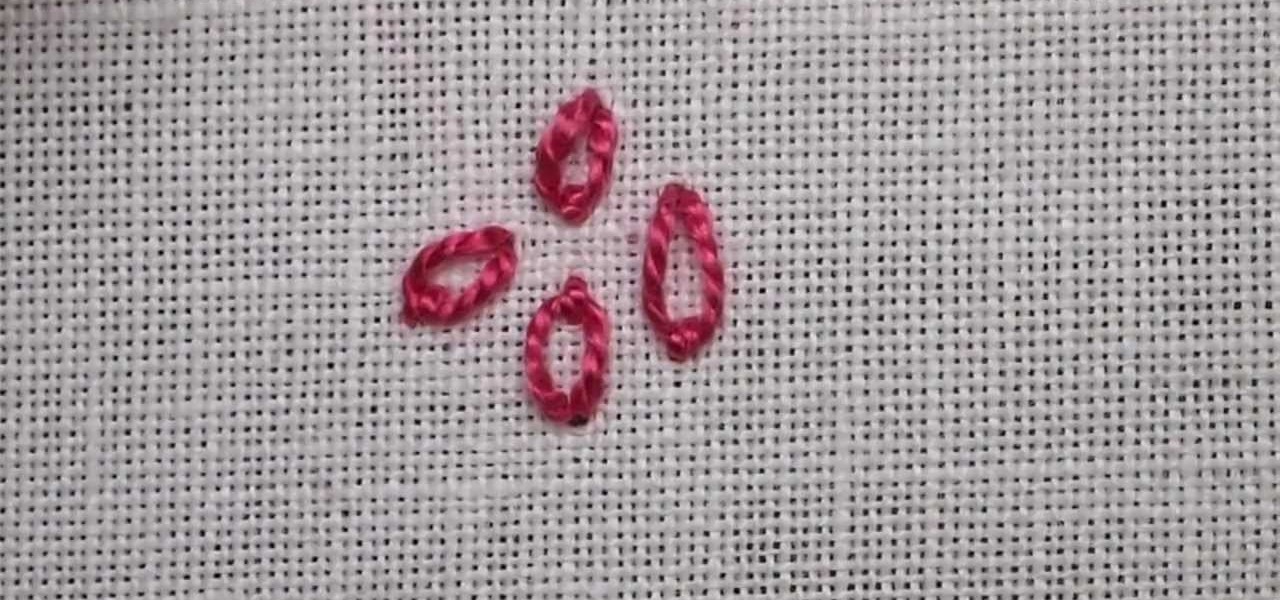
How To: Do the Daisy Stitch
The detached chain stitch, also known as the "lazy daisy" or just "daisy" stitch, is a pretty popular embroidery stitch. It's perfect, of course, for flowers, but can be used in lots of different ways. Watch this video from Needle 'n Thread to see how it's done.
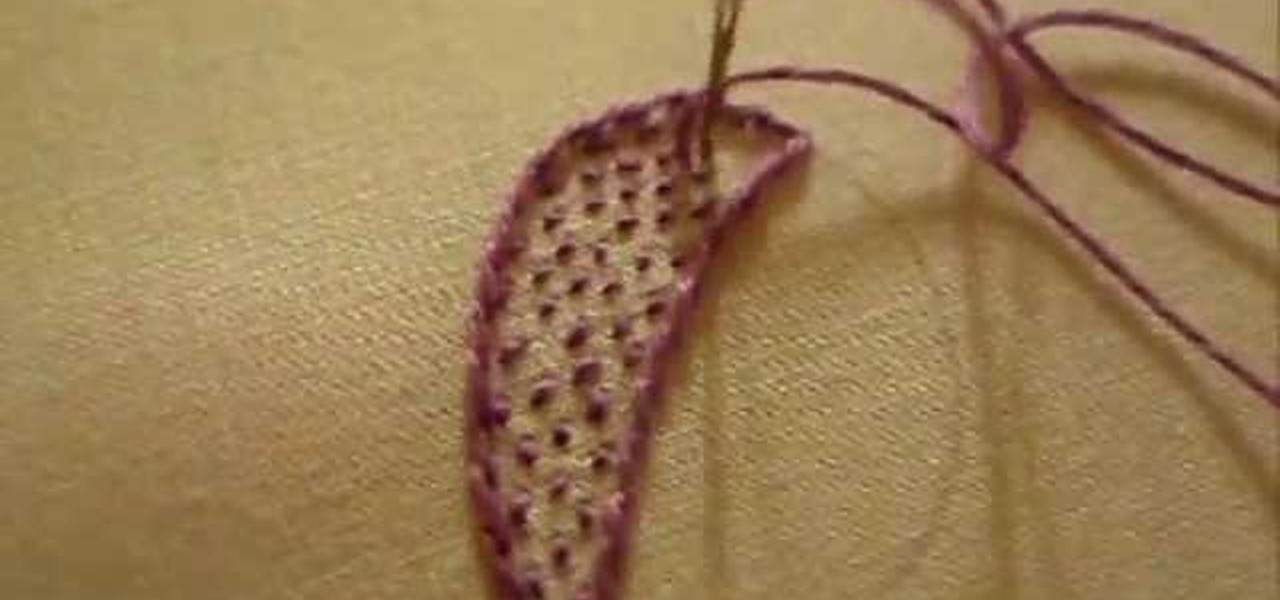
How To: Do the Seed Stitch
Here's a video tutorial for the seed stitch used in hand embroidery. This is a very simple filling technique! Seed stitch looks great when it's worked either in a uniform pattern (as it is in the video) or when it's worked randomly. Watch this video from Needle 'n Thread to see how it's done.
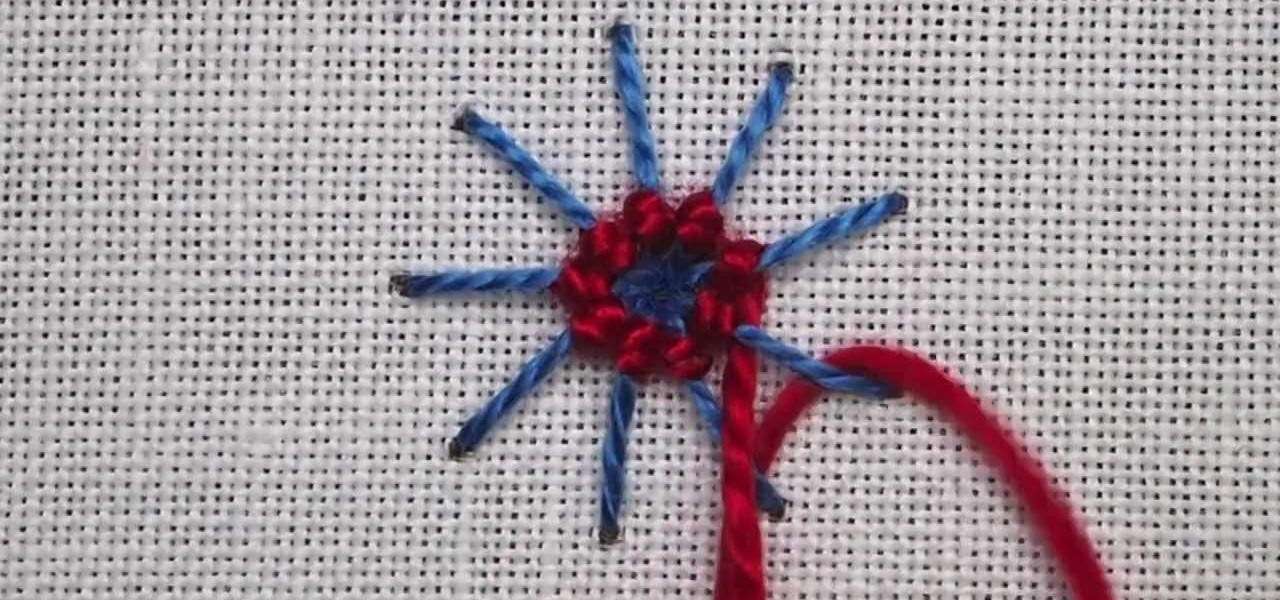
How To: Do the Ribbed Spider Web Stitch
The spider web stitch and the ribbed spider web stitch are both "woven" embroidery stitches, either used as isolated accents or used in clusters. They aren't a line stitch or a filling stitch, and they aren't really a "small" detached stitch that can speckle a background lightly, either. Watch this video from Needle 'n Thread to see how it's done.
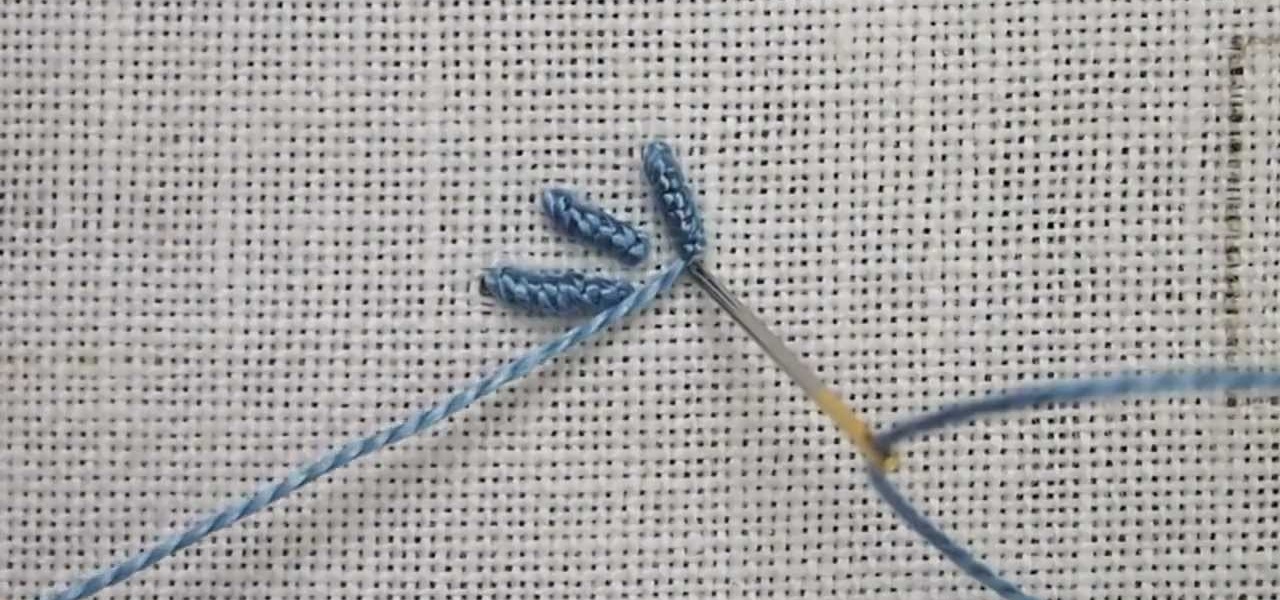
How To: Do Bullion Knots
The bullion knot needs a little practice to get it just right, and to be able to vary your technique to get the results you desire. Watch this video from Needle 'n Thread and get some great tips so you can do it too!

How To: Do the French Knot
The French knot is used often in hand-embroidery, but a lot of people avoid it, because it intimidates them. Once you work one correctly, you'll find that it's really easy!!! Watch this video from Needle 'n Thread to see how it's done.
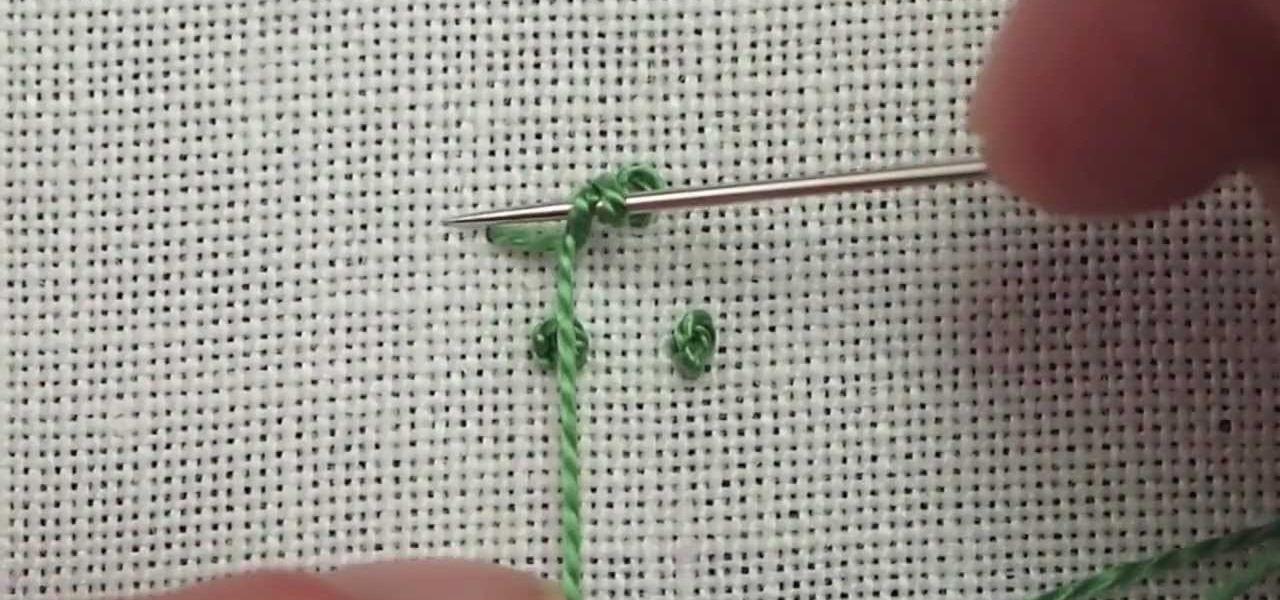
How To: Do the Colonial Knot
The colonial knot is used in hand embroidery in the same applications as the French knot. Here's a video tutorial from Needle 'n Thread to help you get the hang of the colonial knot.
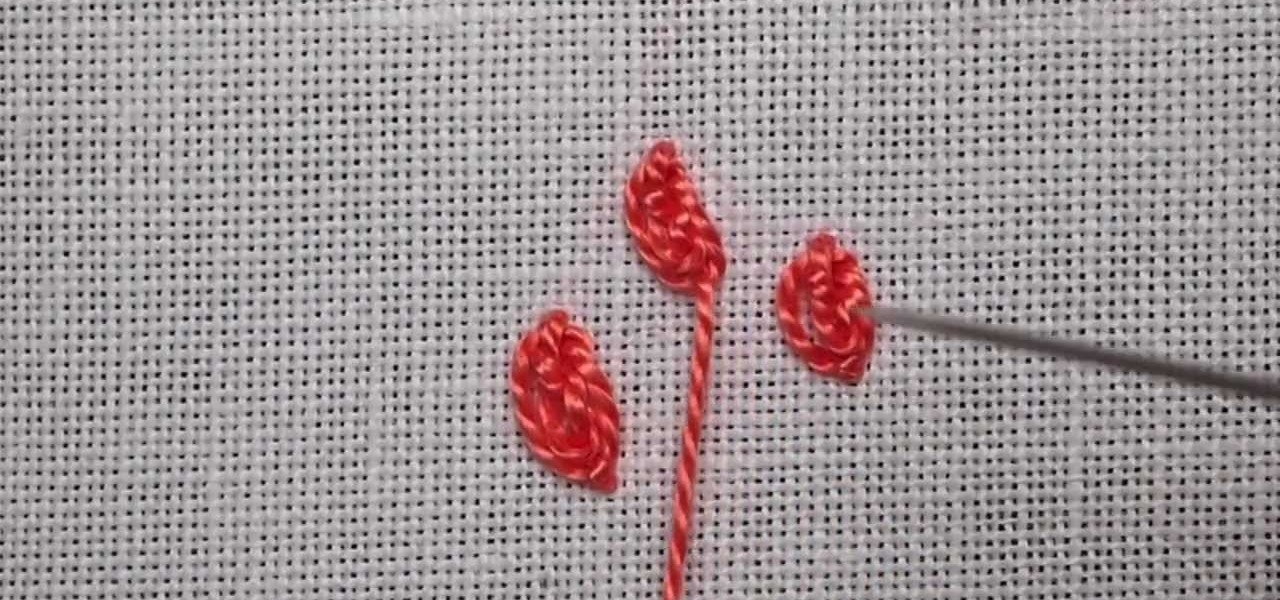
How To: Do the Oyster Stitch
The oyster stitch is an isolated stitch. It is a combination stitch using the twisted detached chain stitch which is "surrounded" by an "open" chain stitch, or even a fly stitch. The oyster stitch makes a filled oval shape, suitable for flower petals or individual buds and accents. Watch this video from Needle 'n Thread to see how it's done.
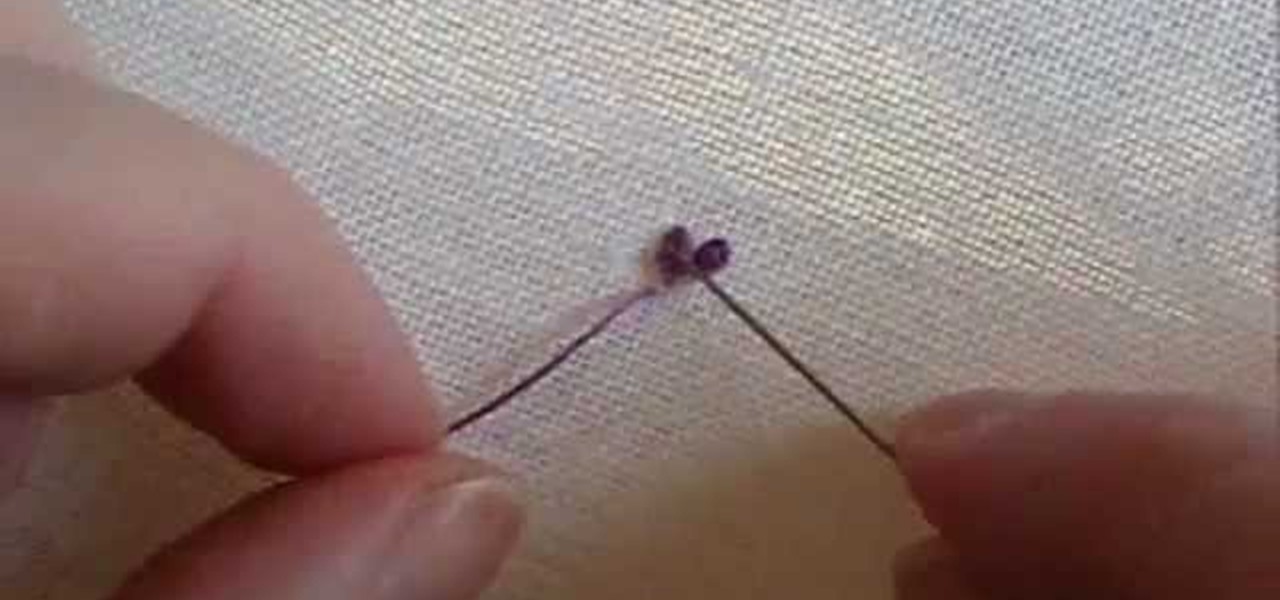
How To: Do the Drizzle Stitch
The drizzle stitch is a "texture" stitch. It makes an individual, almost-upright, slightly twisted "tower" on your fabric. Watch this video from Needle 'n Thread to see how it's done.
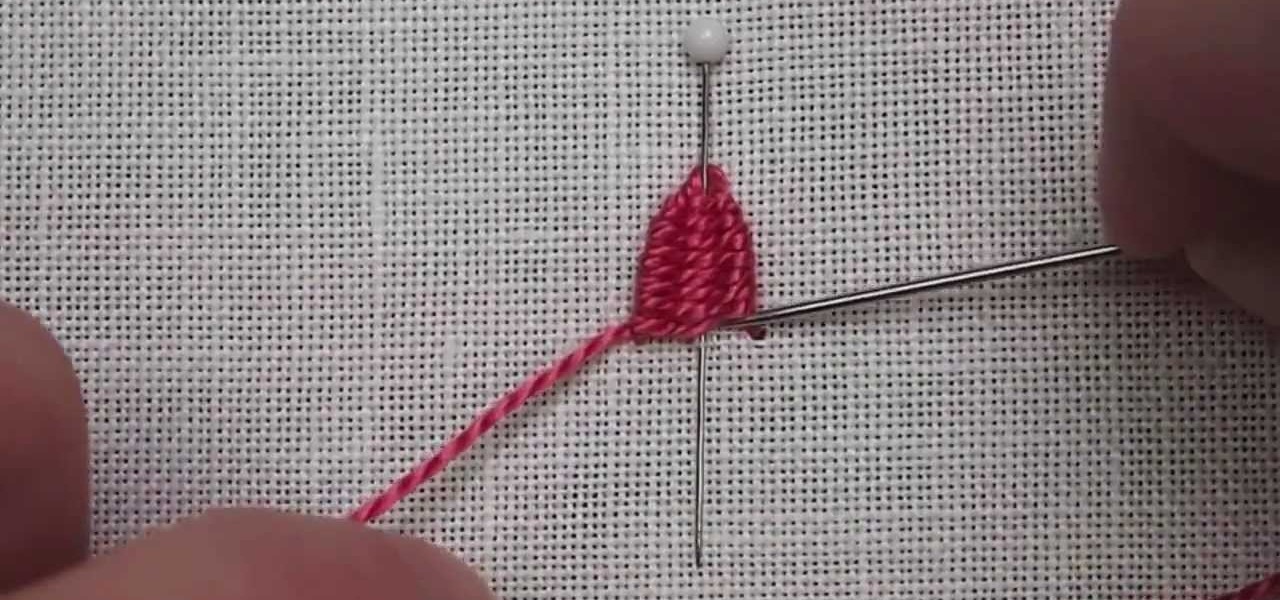
How To: Do the Woven Picot Stitch
There are many dimensional embroidery stitches , but one of the most fun is the woven picot. You can do a lot with it! It's an easy embroidery stitch - it looks more advanced than it actually is! It's a great stitch for adding texture to your embroidery project, and it doesn't necessarily have to be free standing. See how it's done in this video from Needle 'n Thread.

How To: Do Detatched Buttonhole Filling
In detached buttonhole filling, you don't pass through the fabric as you work the buttonhole filling. In attached, you do. Attached buttonhole filling gives you more scope for varying the placement of stitches, so that you can create effective filling patterns. The detached buttonhole, though, gives you a bit more room for dimensional effects, since you can take out part of your foundation fillings and fold the buttonhole area back on itself - or make petals or leaves that stand away from the...
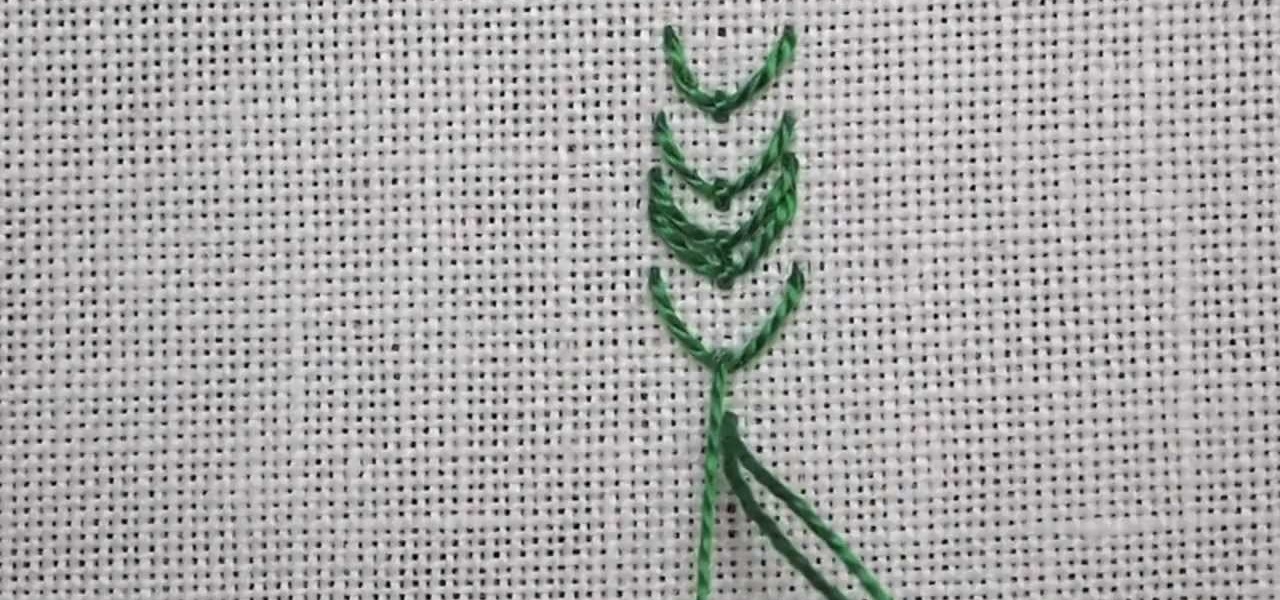
How To: Do the Vertical Fly Stitch
The fly stitch can be worked both horizontally and vertically. In this video tutorial from Needle 'n Thread, you'll see the fly stitch worked vertically.Besides working fly stitches in horizontal rows or vertical columns, the stitch can also be isolated, to create "filled" (loosely filled) background areas, or to create small accent-like stitches across a "canvas." Experiment with it! It's a fun and quick stitch!
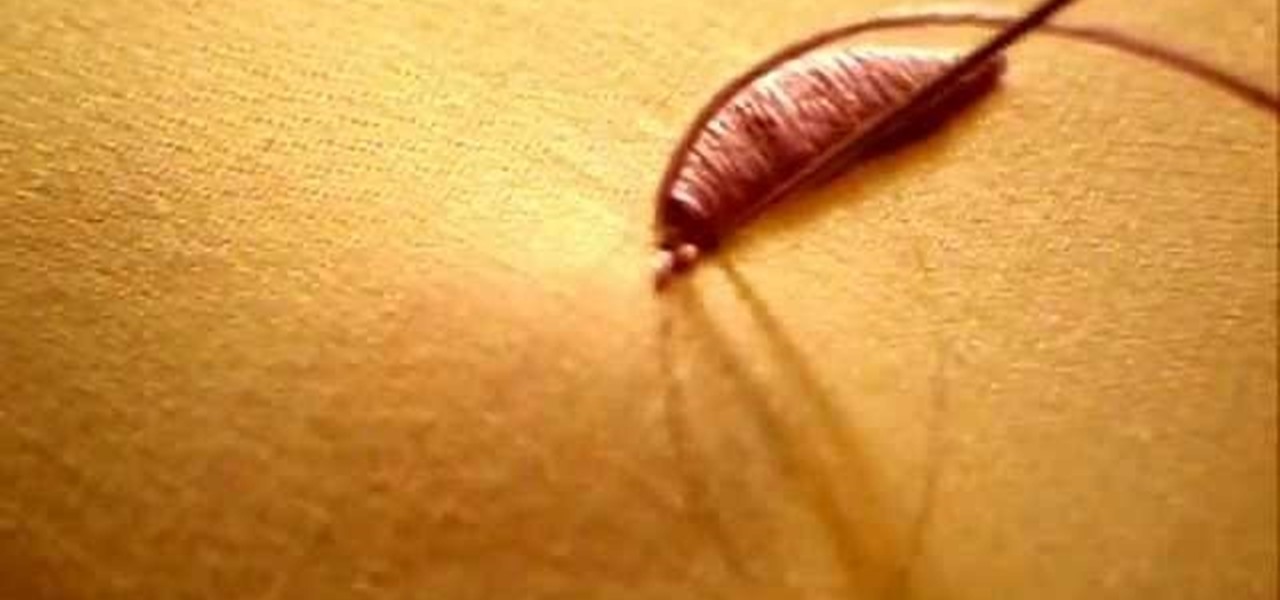
How To: Do the Padded Satin Stitch
Of all the hand embroidery stitches that exist, one of the most beautiful, when done well, is the satin stitch. It does take a little practice to get the hang of satin stitching, and it is true that it is not a very "forgiving" stitch. Watch the video from Needle 'n Thread to see how it's done.

How To: Do Lattice Work
Lattice work is used as filling or for backgrounds. Worked on a plain ground (with only the fabric behind the lattice stitches) it can be easily managed by beginners. Adding a colored background (for example, a background worked in satin stitch) kicks the stitch up a notch to intermediate level. Here's a video tutorial from Needle 'n Thread on working lattice stitch over a satin stitch ground.
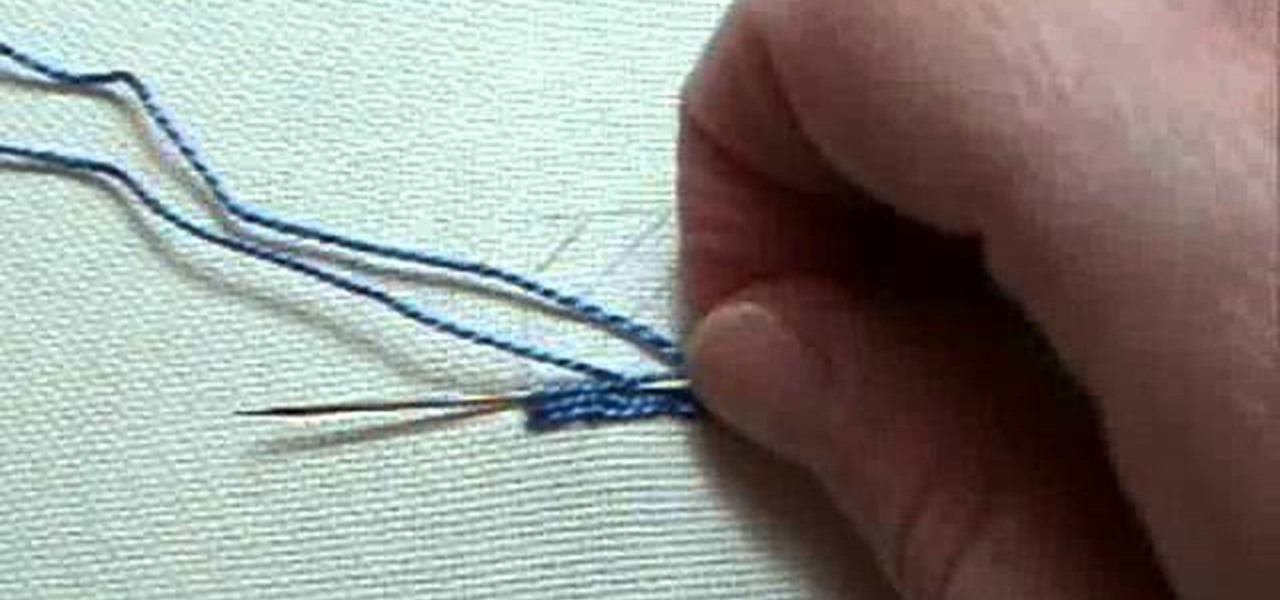
How To: Do the Bokhara Couching Stitch
Bokhara couching is a filling technique used in surface embroidery. Unlike regular couching, Bokhara couching uses only one thread, which serves as both the laid thread and the couching thread. Watch the video from from Needle 'n Thread to see how it's done.
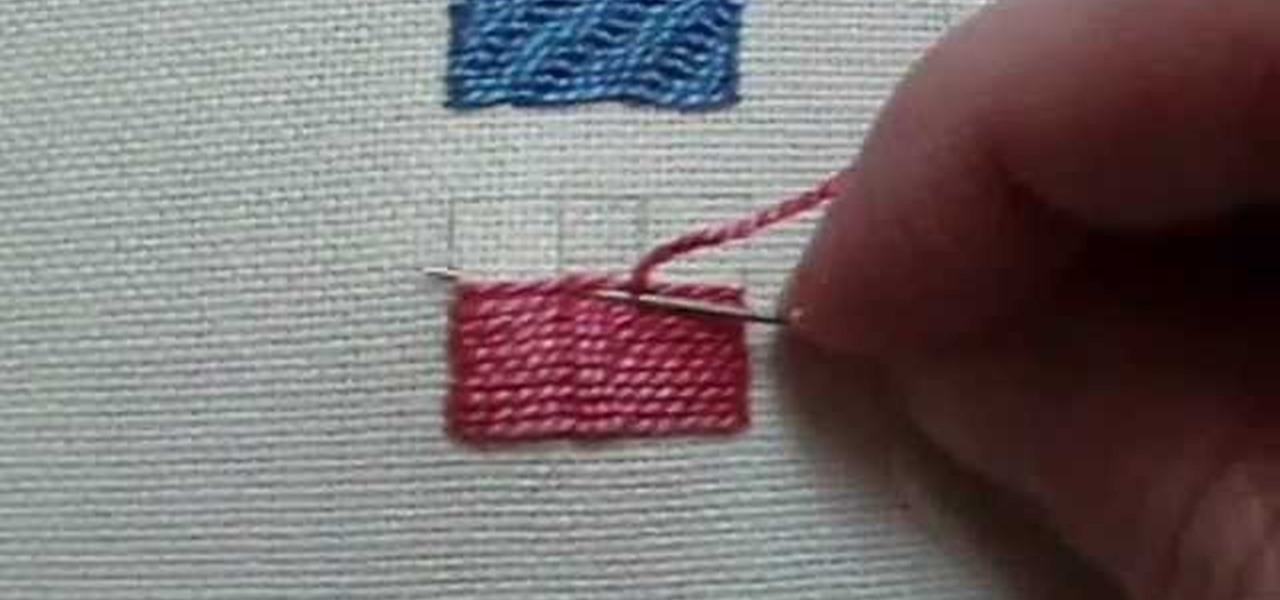
How To: Do the Roumanian Couching Stitch
Here's another video tutorial from Needle 'n Thread for a hand embroidery stitch called Roumanian couching, which is used primarily as a filling stitch.
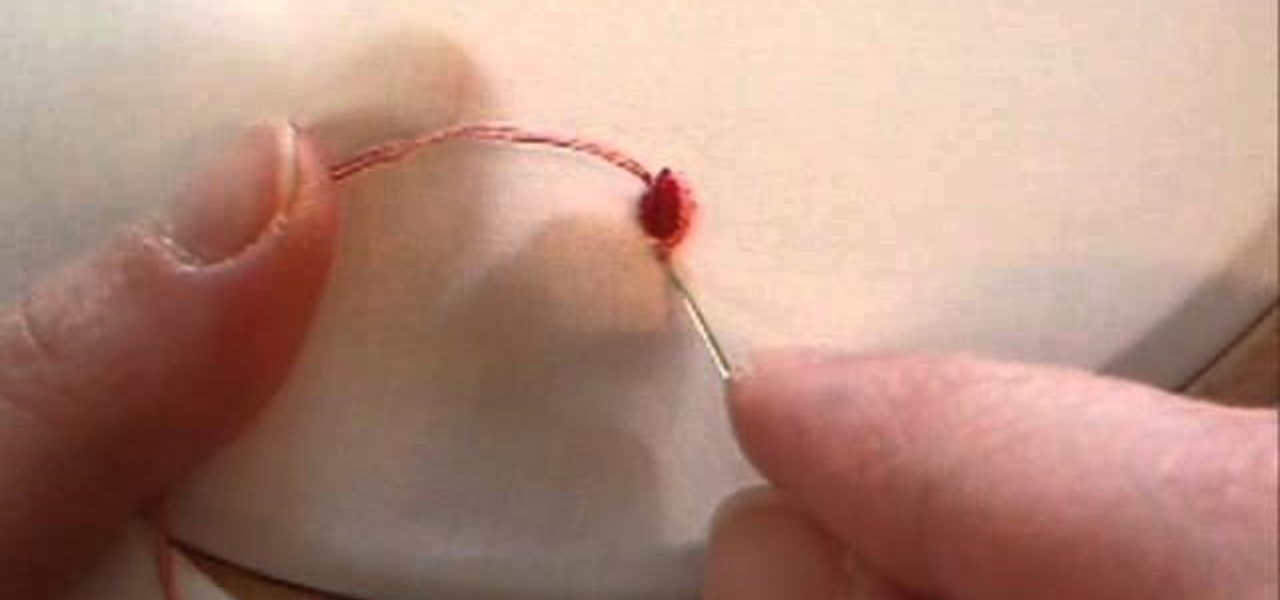
How To: Embroider a Rose Bud Out of Bullion Knots
Here's a video tutorial from Needle 'n Thread for a rose bud made out of bullion knots. The bullion knot can be used to make beautiful roses and rose buds, and, believe it or not, they're actually really simple to make once you get the hang of it!
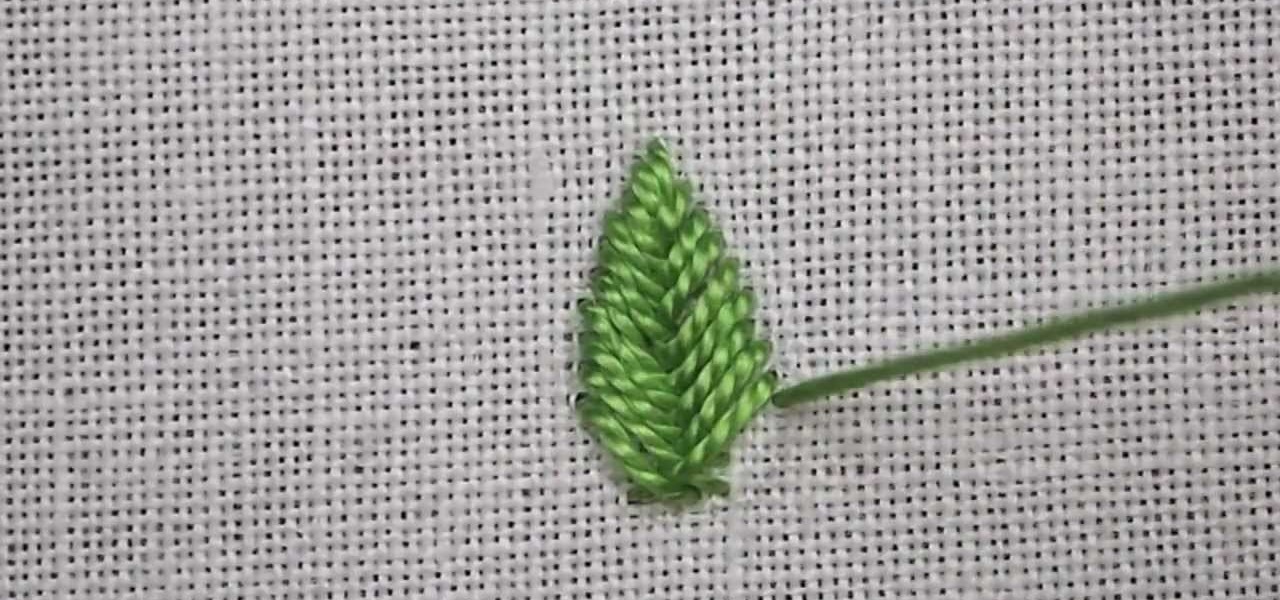
How To: Do the Fishbone Stitch
As you'll see in this video tutorial (from Needle 'n Thread), the fishbone stitch is an easy embroidery stitch to use for filling in leaves (and other shapes, too). The stitch is a good stepping-stone to satin stitch, as it requires you to keep a neat edge on the outside of your design.
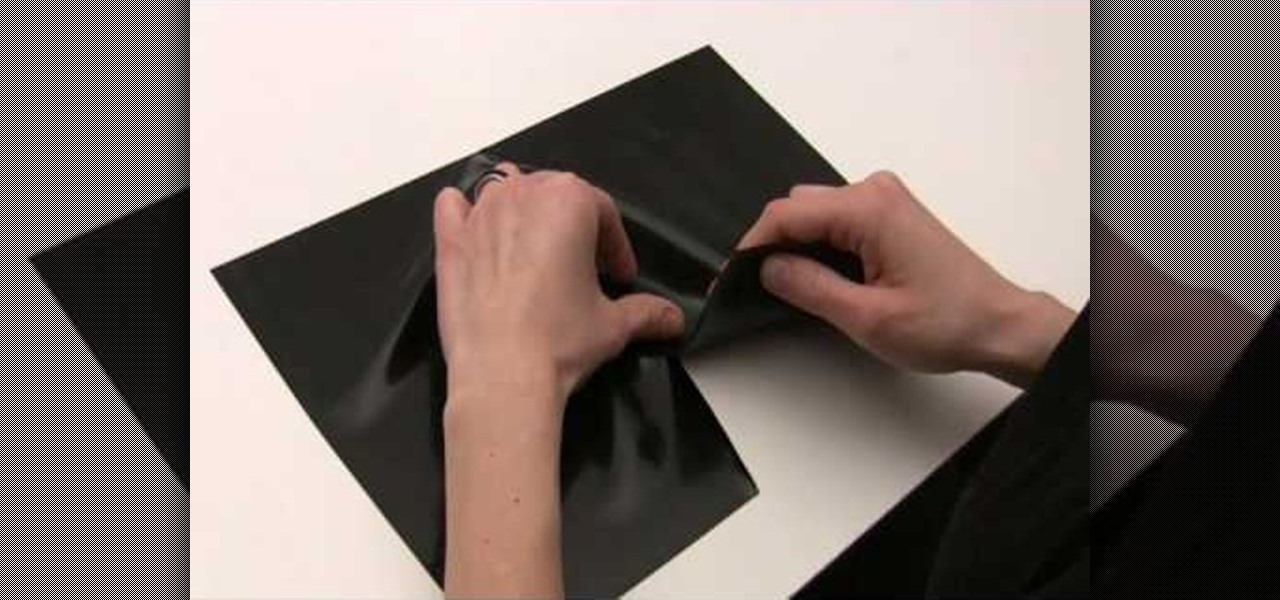
How To: Glue straight and curved latex seams
In this tutorial, we learn how to glue straight and curved latex seams. First, press each piece of latex down so it's just touching in the middle. After this, use your finger to press down on the middle, then take a roller and roll over the middle until it's perfectly straight. Now, stretch out the latex to make sure that both sides are stuck together. To glue curved latex seams, place the pieces together slowly, pushing your finger down in the center as you go to make a curved effect. Once y...
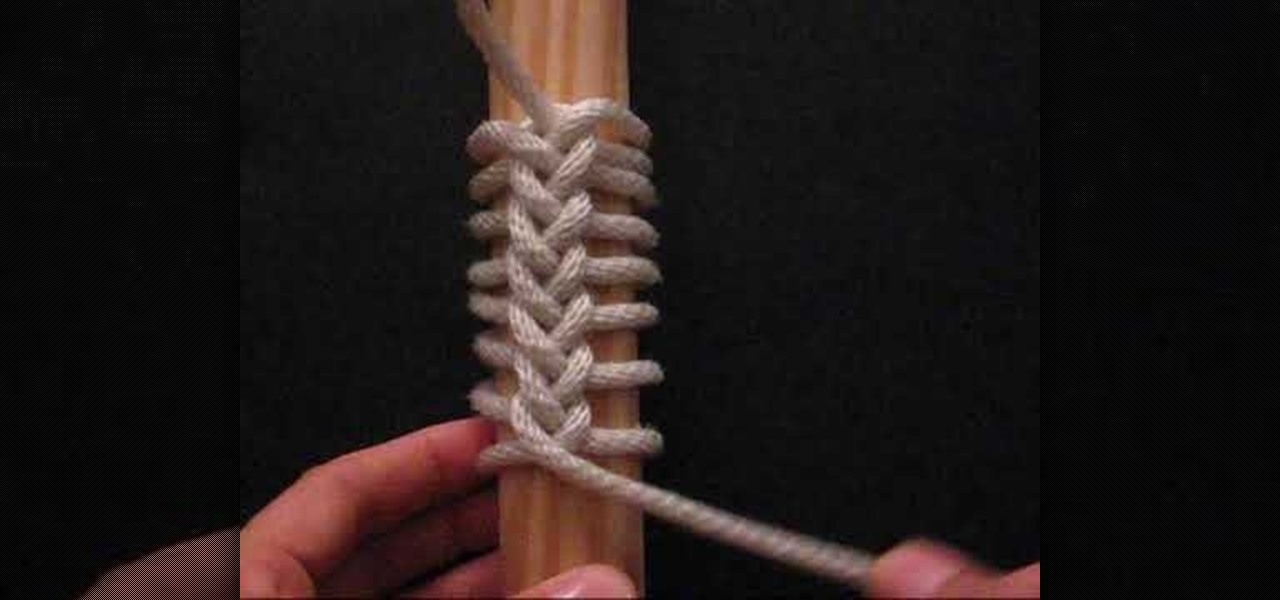
How To: Tie a single-strand Ringbolt hitch knot
In this video, JD, from Tying It All Together, demonstrates how to tie a knot known as a "Ringbolt Hitch". This is also known as "coxcombing". This type of knot was once a common tie used by sailors to dress-up items and parts of their ships. When tying a wheel, a "Turk's Head" knot was used to cover the part of the wheel where the two ends of the ring bolt met, which would firm up the hitch, and help to keep the tied ends from unraveling. It is a nautical tradition to use this type of knot t...
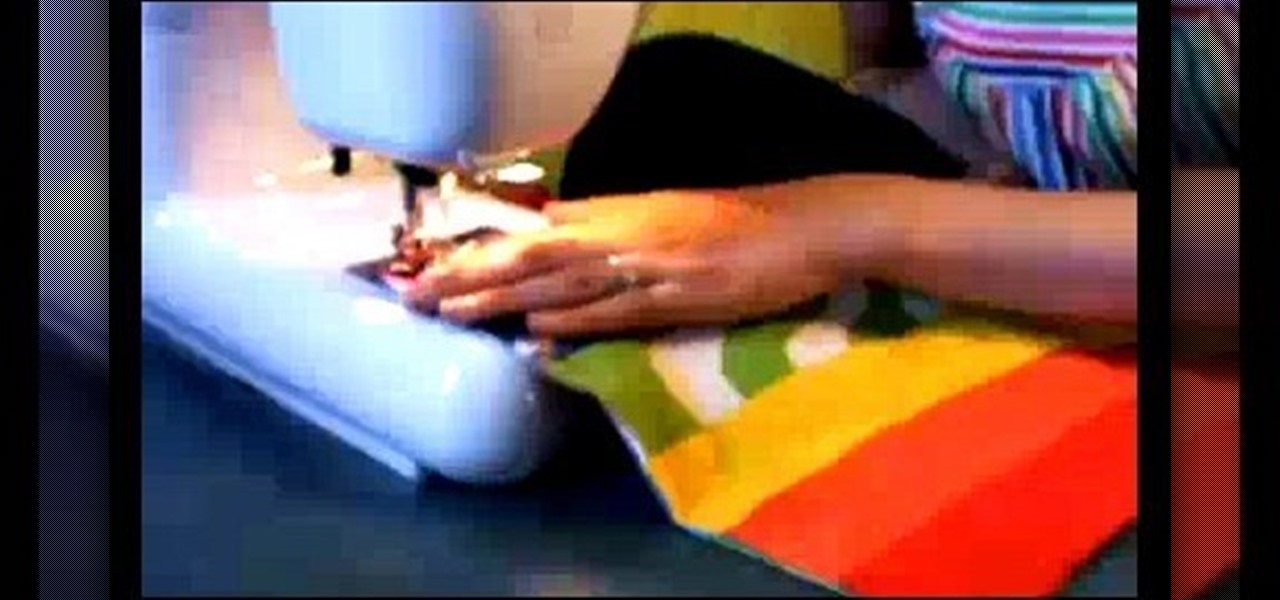
How To: Make a gay pride flag
this tutorial video from Threadbanger will teach you how to do a little DIY exercise to get ready for Gay Pride in New York City. This video will teach you how to make a DIY flag and hit the Gay Pride parade in Manhattan. You can now bring your pride home with your own flag.

How To: Sew a one hour flapper style dress
This video sewing tutorial series shows how to make a flapper style dress in under an hour, from start to finish. Learn the basic steps to stitch together this simple and beautiful dress. Watch and follow along to make your own today!

How To: Sew a Stroller Bag
I was tired of digging around in my stroller basket—it was impossible to reach! So I designed this easy-to-sew stroller bag. It snaps onto ANY stroller's handles, and hangs where you can reach it.
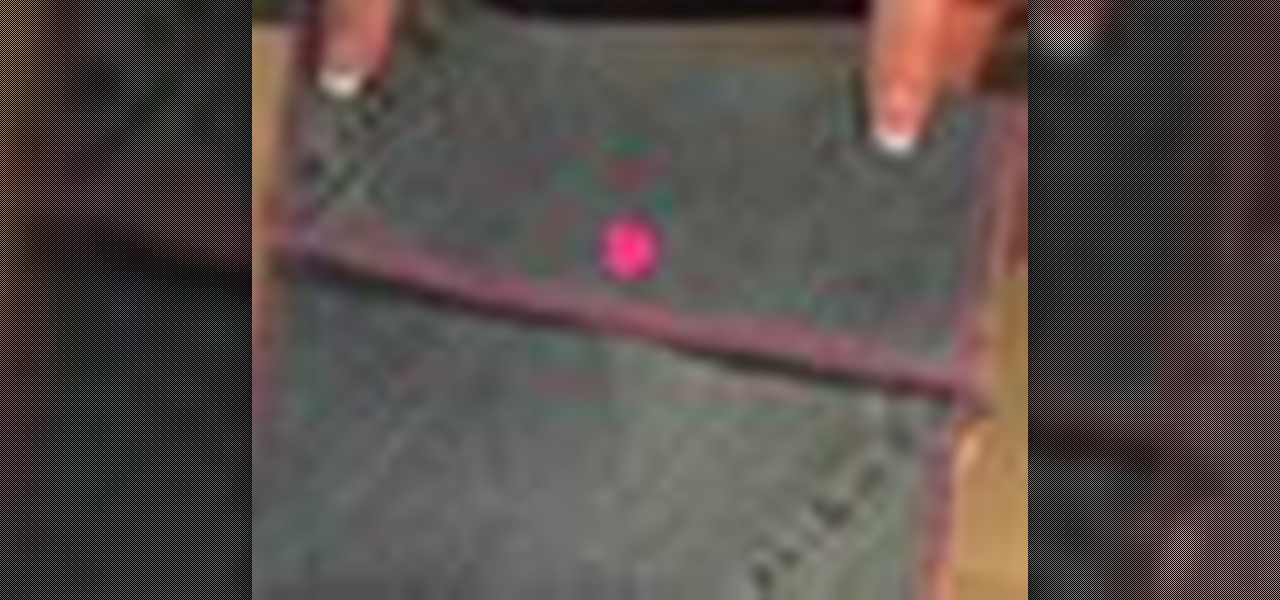
How To: Make a Handbag Out of an Old Pair of Jeans & Some Scrap Fabric
Start with an old pair of jeans and some scrap fabric. Then, using a few small sewing notions (scissors, thread and a decorative button) and the pattern given in this video, transform this old fabric into a super cute and useful lined handbag.

How To: Make a Basic Skirt Pattern
Written instructions on how to draft a basic skirt pattern with accompanying video. Take your correct measurements before you begin.

How To: Make elegant, hand-sewn fabric flowers out of lace scraps
Add an elegant touch to your next crafting project! You can turn scraps of lace fabric, cut into circles, into beautiful little flowers. Fold your circles into small wedges, sew them together at the base and then attach them to a string necklace or your favorite piece of clothing!





